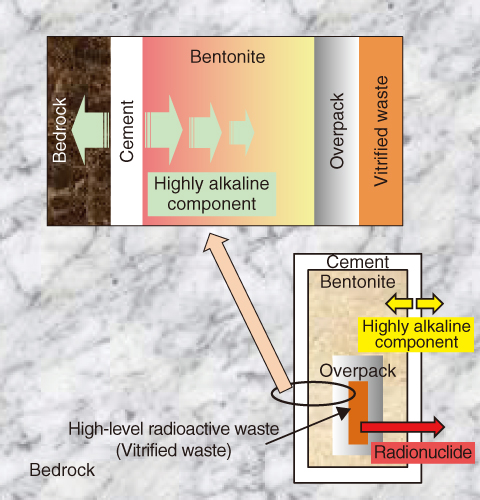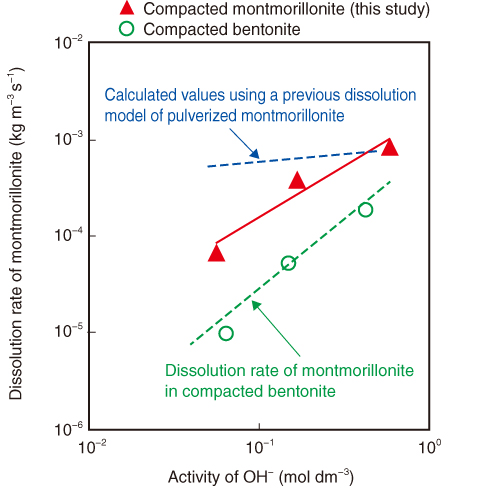
Fig.2-12 Conceptual view of disposal system for HLW

Fig.2-13 Dissolution rate of montmorillonite in highly alkaline solutions
In geological disposal of high-level radioactive waste (HLW), vitrified waste containing long-lived radionuclides is encapsulated in an iron container called an overpack, surrounded by an engineered bentonite buffer material (compacted bentonite), and placed in a repository in stable bedrock, as shown in Fig.2-12. The high sorptivity and low permeability of bentonite retards outward radionuclide movement. Because the radionuclide-confining property of the bentonite depends on the montmorillonite content, the dissolution of montmorillonite induced by the highly alkaline component supplied from the cementitious materials in the system must be revealed to evaluate the long-term barrier function of this system.
Previous studies on the dissolution rates of clays in alkaline solutions used pure pulverized montmorillonite; hence, the rates were obtained for a much lower solid/solution ratio than that warranted by the disposal conditions. Whether the rates may be applied to predict the dissolution of compacted bentonite under current disposal conditions remains a question. Therefore, by experiment, we determined the dissolution rate of montmorillonite in compacted bentonite. The dissolution rate thus obtained for compacted bentonite was lower and depended more strongly on the activity of hydroxide ions (OH–) than the rates obtained in previous studies. However, the mechanism behind such differences has not yet been clarified.
The present study experimentally investigated the dissolution rate of pure compacted montmorillonite at 130℃. The dissolution rate of montmorillonite is found to be higher and depends slightly less on the activity of OH– in pure compacted montmorillonite than on its activity in compacted bentonite, as shown in Fig.2-13. These results suggest that the dissolution of montmorillonite in compacted bentonite is inhibited by decreasing the activity of OH– by dissolving accessory minerals, such as silica, in the bentonite. The logarithmic plot of the dissolution rate shows that the effect of the inhibition would thus be enhanced at lower activity of OH–.
The present study was sponsored by the Secretariat of the Nuclear Regulation Authority (NRA) (formerly the Nuclear and Industrial Safety Agency (NISA), Ministry of Economy, Trade and Industry (METI), Japan).